@ http://zeenews.india.com/news/nation/india-to-launch-mega-cultural-fest-in-egypt_921309.html
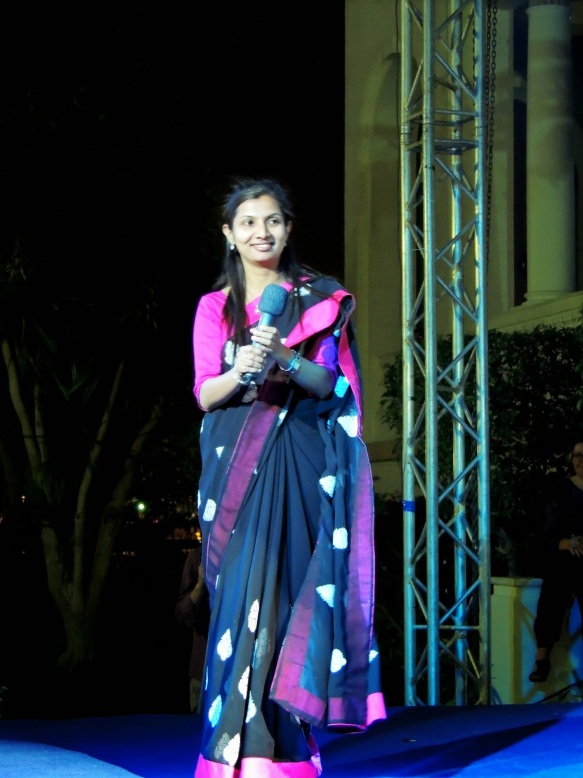
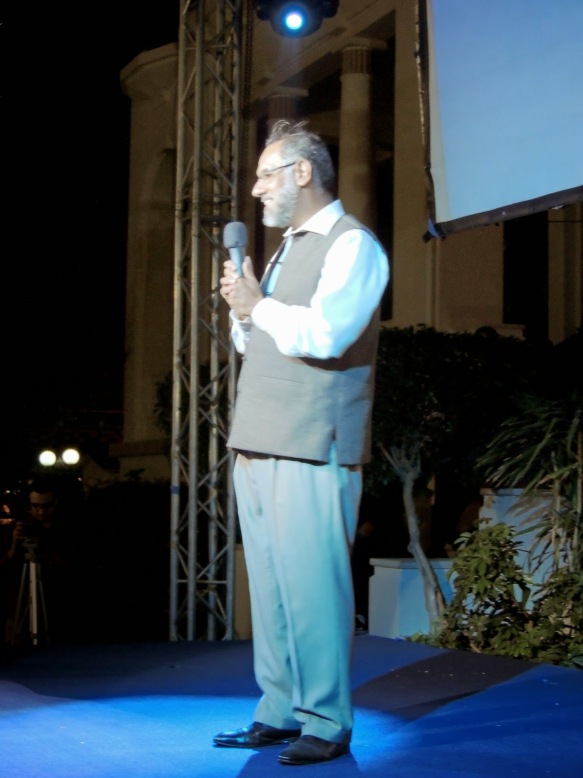
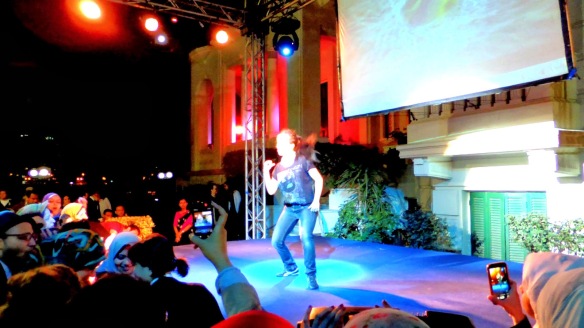
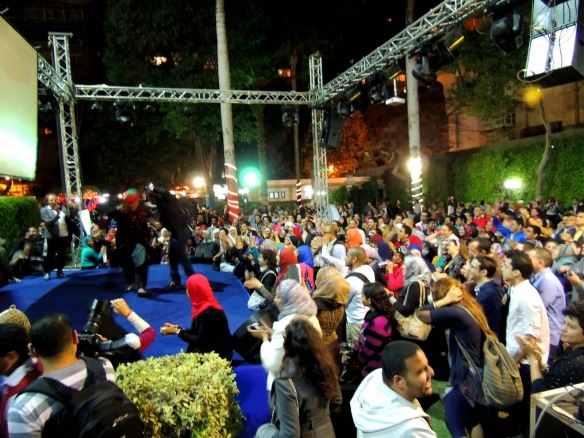

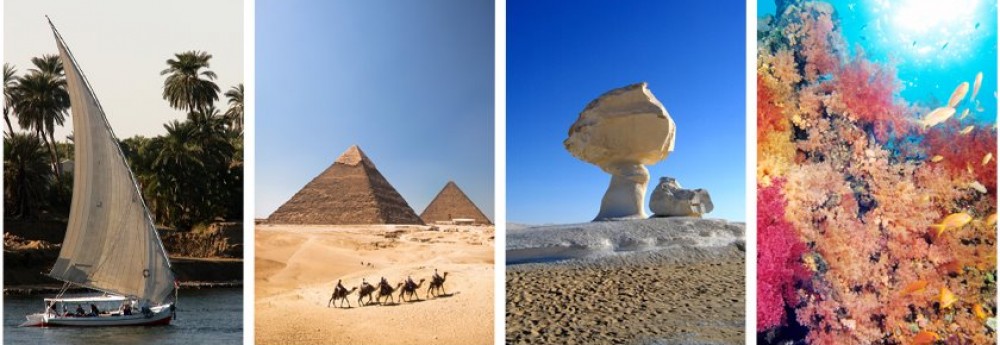
@ http://zeenews.india.com/news/nation/india-to-launch-mega-cultural-fest-in-egypt_921309.html








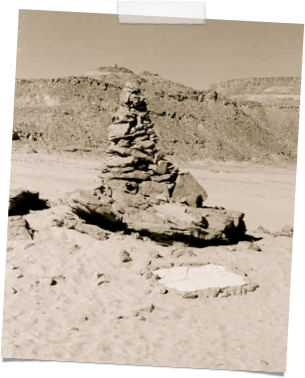
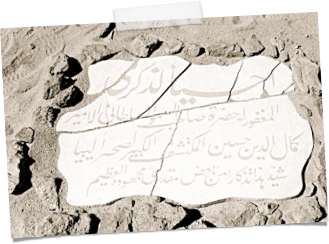
13 March 2014 – Arriving Cairo
Overseas participants arrive in Cairo. We will assist with hotel bookings and we will be delighted to assist and organize transfers to the hotels (only hotels listed as participating in Kamal Expedition).
14 March 2014 – Opening ceremony – Flight – Drive heading to Gilf Kebir
We will have a transfer organized from the hotels of our choice to the Kamal Expedition Opening Ceremony which will be held at the Automobile & Touring Club of Egypt in Cairo. You also have the choice of joining us independently at the Club if you wish. After a brunch and the ceremony we will be heading to the Cairo International Airport to catch a charter flight to Dakhla Oasis.
At the airport of Dakhla the packed 4×4 cars will be waiting for us and will bring us to have lunch. Meanwhile the last formalities will be finished with the government to have
a fast start to the desert after lunch. Divided into several groups, the participants will be leaving the Oasis heading south on the Asphalt Road. Leaving the road, our first visit will be the Balise of Saviem Trucks which traversed the entire Sahara from West to East in 1977 (from the Atlantic ocean to the Nile). In the area of G-Hills we will be looking for a camping place. In the evening we will have the chance to listen to an interesting lecture on a chosen topic related to the desert by one of our top speakers.
15 March 2014 – Wadi Eight Bells
After breakfast, we will be continuing in groups crossing different desert landscapes to approach the Gilf El Kebir plateau. We will find some relics from the Second World War: broken down Cars which were used by the British Special Forces, the Long Range Desert Group. We will also cross some dunes to reach the landing ground of 8 Bells where we will set up camps nearby. Like every night we will have the chance to listen to an interesting lecture on the desert by one of our top speakers.
16 March 2014 – Gilf Kebir – Wadi Wassa – Kamal El DIn Monument
We will be traveling through the Wadi Eight Bells to reach the Wadi Wassa and the Rock paintings of the Mararet el Qantara which was found in 1935 by a British explorer group under the leadership of Shaw. From here we will be heading south to the southern tip of the Gilf el Kebir Plateau where Almasy erected the Kamal El Din Monument 81 years ago. Nearby, we will find a set up prepared for the group. It will be on that occasion were all the groups will be gathered together and we would have a longer entertaining program for you that evening including the screening of a documentary film. If you do not feel like attending the screening, you could enjoy the calm evening weather some hundred metres away.
17 March 2014 – Camil Crater
After a late evening, the starting of the groups will be delayed. They will be heading to the south to reach the meteorite crater of Gebel Kamil, where they will be camping nearby. The evening will once again be filled with an interesting topic of one of the speakers.
18 March 2014 – Gebel Uweinat – Karkur Talh
The groups will be heading towards Gebel Uweinat to arrive there after a few kilometers looking for camping places in the Karkur Talh area and will be exploring the different sites of the Gebel Uweinat. In the evening there will be a chance of attending another interesting lecture.
19 March 2014 – Rock cave near Peter & Paul
There will be a chance to have a short hike in the mountain in the morning before heading back north to reach some interesting rock art caves near the mountain of Peter & Paul. In the evening another interesting lecture will be organized.
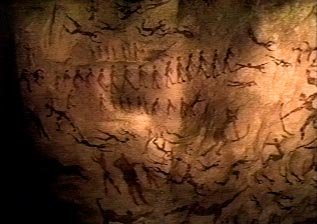
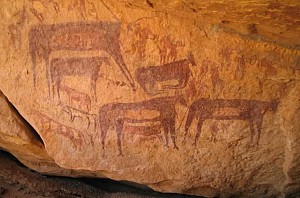
20 March 2014 – Gilf Kebir – Wadi Sura
We will be reaching the area of Wadi Sura (the Cave of Swimmers) which became famous through the 1997 film The English Patient. We will be visiting the Clayton Cave and the Chinati Camp site exploring some rock paintings nearby. Before that, we will have a second gathering in front of the Cave of the Beast. Here all the groups will unite for a second time to watch a short film about the life of the late Egyptian Father of Environment, Prof. Mohammed el Kassas, who died on that day (March 21st) one year ago in Cairo. Through different presentations and a film we will have a second longer night in that area.
21 March 2014 – Gilf Kebir Aqaba Pass
The groups will split up again to move over the Three Castles to the Aqaba Pass to drive on top of the Gilf Kebir Plateau and to cross some dunes which are on top of the plateau. Here we will be looking for different camping areas and have the chance to another interesting lecture.
22 March 2014 – Gilf Kebir – Wadi Hamra
We will reach the higher level of the Plateau and have a nice view at Belle Vue
onto the southern plane. Driving along the edge of the plateau we will reach a passage which will get us to the southern tip of Wadi Hamra. Here, we will be visiting different engraving sites and have a special look at the different Fauna of the Gilf el Kebir area. We will be camping at the northern exit of the Wadi Hamra where each group will get a chance to listen to an interesting lecture.
23 March and 24 March 2014 – Crossing Great Sand Sea
These 2 days we will be crossing the dunes of the Great Sand Sea having exciting passages crossing the dunes from west to east.
25 March 2014 – White Desert
We will be back near the Wadi Obaid and we will be entering the National Park of the White desert. Here a buffet will be waiting for all the participants. The groups will be spread in the National Park and a last evening with lectures will end our evenings in the desert.
26 March 2014 – Cairo – Closing Ceremony in Mena Hous
We will be leaving the White Desert National Park heading back to the road in a northerly direction reaching Baharya Oasis where a lunch will be prepared for everyone. After lunch, a 300 kilometre drive to Gizeh will bring us to the Mena House Hotel at the foot of the Pyramids. After a welcome coffee and cakes, the closing ceremony will be held in the hotel and will include a dinner. The anniversary of the Prince Kamal el Din monument will come to the end of its journey.
for more info visit : http://www.kamalexpedition.com
British tourists wishing to visit the Valley of the Kings, home to Tutankhamun’s famous tomb, can once again do so safe in the knowledge that they will be covered by travel insurance after the British government relaxed long-standing advisories.
The FCO is still warning against all but essential travel to a large part of the country including Cairo and the North Sinai but destinations such as Luxor, Aswan and the Abu Simbel temples in Nubia are back on the map.
Each of the Minister of Tourism, Environment,Communication and the Minister of State for Parliamentary and Legal Affairs resigned formally to the Council of Ministers to submit it to the presidency.
In protest at the poor performance of the institution of the presidency and not dealing with the will of the people and not to pay attention to events that fill the areas of Egypt .


By Mark Hodson, Editor of 101 Holidays
I’ve just returned from a visit to the Egyptian Museum in Cairo where I spent three hours utterly enthralled by the treasures of King Tutankhamen. I don’t think I’ve seen a more impressive collection of artefacts anywhere in the world, brilliantly brought to life by our expert guide, Akram “Aki” Allam.
The museum is cavernous, dusty, unkempt and in many places badly lit. But it’s a wonderful experience, and sufficient reason alone to visit this baffling and exciting city.
It’s also unusual in enforcing a strict ban on photography. No snaps are allowed anywhere in the museum building.
In an age when most people pack a camera in their handbag or hip pocket, this seems almost like an infringement of human rights. If I want to whip out my iPhone and quietly peel off a few snaps, why shouldn’t I? After all, it’s all good publicity for the museum, isn’t it? Sharing on Facebook and Twitter is only going to encourage more tourists.
But the Egyptians seem immune to these arguments, something for which I find myself feeling immensely grateful.I admit that when I first saw the “No photography” sign I felt mildly irritated, but once I started to view the astonishing exhibits and get sucked into the amazing story of Tutankhamen, I was relieved to be freed from the urge to take pictures.
What’s more, I didn’t have other tourists with cameras pushing in front of me for a shot, apparently feeling that holding a camera or a phone gives them carte blanche to barge others out of the way.
The treasures of the teenage Pharaoh – including his iconic death mask, pictured above – are so extraordinary that the only proper response is to stand and gaze. Which is what I did.While other tourists strolled past and made small talk, I enjoyed a long period silently staring into the eyes of King Tut, soaking up the majesty of this most intimate of art works.
It is said that in some regions of the world, people believe that cameras can steal their soul. But maybe the truth is that they are stealing ours.Just as our ability to read is being corroded by Twitter feeds and 24-hour rolling news, perhaps the constant photographing of everything around us is affecting our very ability to see.
Maybe the way to enhance our experience as tourists is to put away the cameras and open our eyes instead. And if we can’t, then perhaps more museums should ban photography all together?
After all, it’s likely that the photos on your phone will be quickly forgotten, replaced by the next batch of shiny new digital images. Memories, on the other hand, will burn themselves into your soul, and shape who you are.
* I am in Egypt as a guest of Abercrombie & Kent with a small group of travel bloggers including Jayne Gorman of 40 Before 30 and Abigail King of Inside the Travel Lab. The photos on this page were – of course – supplied by the Egypt Tourist Authority.
the source of this essay is : http://www.101holidays.co.uk
Officially inaugurated on April 20, 2006, the Imhoteb Museum located at the foot of the Saqqara necropolis complex, near Memphis,venerates both the Ancient Egyptian architect Imhotep and the notable French Egyptology Jean Philippe Lauer.

The name Imhotep means the one who comes in peace; he was a genius architect who constructed the first stone pyramid ever in the Ancient Egyptian history- the step pyramid of Sakara plateau dating back to the third dynasty around 2700 B.C. Imhotep held diverse posts and titles, amongst which was the vizier and architect of the king, the physician, chancellor to the pharaoh, high priest of the sun god Ra at Heliopolis and administrator of the palace. The Greeks also considered him as the god of medicine as Aesculapius.The museum’s major theme is to display the most significant artifacts discovered on the Sakara site. Prior to the entrance on the right hand side visitors are first welcomed into a visitor’s center or the so called visual setting hall where they watch a 10-minute documentary movie on Sakara’s history called Sakara Hidden Path to Eternity presented by the National Geographic Television and Film, in cooperation with the Supreme Council of Antiquities and narrated by renowned Egyptian and international actor Omar El Sherif. Upon entering the first of six halls, visitors will encounter a remaining pedestal of King Zoser’s statue found at a small sanctuary south of the entrance colonnade of his funeral complex. The feet steps over nine bows representing foreign countries. On the base is an inscription with the names and titles of King Zoser; besides which Imhotep was granted the privilege of carving his name. To the right is the second gallery called Sakara’s Mission, showing the most recent discoveries unearthed in Sakara by various archaeological missions. Among the collection is the famous well preserved and gold cased anthropoid coffin, which was among the excavations of Dr. Zahi Hawas Secretary General of the Supreme Council of Antiquities dating back to the late period around the 30th dynasty.In addition to copper surgical instruments from a 5th -6th dynasty tomb of Qar who was a physician of the palace and keeper of the secrets of the king. Near his tomb other bronze objects were found including a statue of Imhotep that was found in a cache dating to the late kingdom, which is currently on show in another hall of the museum. In this room is a TV screen showing a short documentary film under the name of Imhotep narrated in different languages. On the right hand side next to the Sakara Mission room is the third Sakara Styles hall presenting a collection of stone vessels used for cosmetic mate -rials and ointments from the early dynastic period. Among these are a collection of clay and alabaster vessels in various shapes. More than 40,000 vases carved from hard stone were found in galleries beneath the Step Pyramid. Many of these were from the first and second dynasties and it is believed that Zoser placed them in his tomb. Moreover one could see a different collection of instruments and tools, a collection of limestone and vividly painted wooden statues. After the Sakara styles gallery the visitor will pass through another fourth hall designed mainly to exhibit remains of diverse architectural styles from Zoser’s funeral complex at the site. Items include remains of columns form the colonnade, remaining frieze of cobras brought from the facade of the southern tomb’s cult chapel for protection, a headless statue of King Zoser, a large model of the blue tiled wall of the step pyramid’s southern tomb, showing king Zoser in a ceremonial dress for his jubilee festival known as the Heb-Sed Festival. Also on show in this room is the famous bronze statue of Imhotep.A doorway from the fourth gallery leads to the fifth entitled Sakara tombs providing a general idea of a tomb’s content. On show is a wooden coffin with remains of blue colors and has religious coffin texts inscribed on its inner sides painted in black on a yellow coating. Above the coffin was found a wooden rowing boat which is now on show above the coffin. An offering table and a false door are also on display close by the coffin.

On the right hand side of the room is most probably the mummy of Merenre discovered by Gaston Maspero in 1881 dating back to the 6th dynasty around 2297-2292 B.C. The room exhibits the work of Jean Leclant and Audran Labrousse at the Pyramid Complex of Pepi I and Pepi II, including on show the viscera of King Pepi I as well as remaining preserved parts of a kilt. Back heading towards the exit we see the Lauer’s library marking the sixth and ultimate gallery. The French Archaeologist Jean Philippe Lauer devoted his life to Sakara, which has always been and remains a place of attraction with all what it has to offer visitors; he especially consecrated his efforts to the restoration of the Step Pyramid. In 1926, he was invited by the Egyptian Antiquities Service to Egypt on a mission for eight months; but ended up staying in Egypt until he died in 2001. He excelled in introducing modern restoration techniques, which served as a model for work still used by the Supreme Council of Antiquities. On display are some of his books, publications, tools, his hat, camera and compass.

Directions:
Straight down El Mounib ring road from C o r n i c h e E l M a a d i , t a k e t h e Marrioteya-Sakara exit passing the Cataract Pyramids Resort Hotel on the left hand drive for approximately 22 km south west of Cairo. Upon reaching the Sakara plateau entrance, you will have to stop for a security check,after which you can purchase tickets to the Sakara plateau. Take the first right exit immediately after the ticket office to visit the museum, located right at the foot of the plateau. A separate ticket office for the museum is right nextto its entrance. Entrance fees for cost LE15 for adults and LE10 for students.Cameras are free of charge; however the use of flash is prohibited.
In Cairo today on the occasion of the launch of the EU-Egypt Task Force, Catherine Ashton, High Representative of the Union for Foreign Affairs and Security Policy/Vice-President of the Commission, together with Mohamed Hisham Zaazou, Minister of Tourism of the Arab Republic of Egypt, unveiled a near-perfect facsimile of the Tomb of Tutankhamun.
Catherine Ashton said: “I am so excited to be here. For those of us who have the privilege of visiting this country, this is a wonderful symbol of the richness and the culture and the heritage that exist in Egypt. It is also a wonderful expression of what we are trying to do here in Egypt with the Task Force: bring Europe and Egypt closer together and promote Egypt, this rich and great country, to show that it is a place to invest, a place to visit, a place to feel welcome at and the place we want to see succeed.”
The unveiling coincides with the 90th anniversary of the discovery of the original tomb. The technology behind the facsimile was developed by Factum Arte, based in London and Madrid, who worked for two years on the project together with the University of Basel and under licence from the Supreme Council of Antiquities. It is a gift to the Arab Republic of Egypt from the Factum Foundation and the Society of Friends of the Royal Tombs, facilitated by the EU Delegation in Egypt.
@European Commission

Czech archaeologists have unearthed the 4,500-year-old tomb of a Pharaonic princess south of Cairo, Egypt’s antiquities ministry said.
Ministry official Mohammed El-Bialy said that princess shert nebti’s burial site is surrounded by the tombs of four high officials from the fifth dynasty dating to around 2,500 BC in the Abu Sir complex near the famed step pyramid of Saqqara.
The official said further excavation is needed before the tomb can be opened to the public.
Antiquities minister Mohammed Ibrahim said in a statement that the ante-chamber to the tomb of the princess includes four
limestone columns and hieroglyphic inscriptions.
Egypt’s vital tourism industry has suffered from the country’s internal unrest in the wake of the 2011 uprising that toppled Hosni Mubarak.
@irishtimes.com & skynews 




 Egypt – El Fayoum – Oases
Egypt – El Fayoum – OasesNew York researchers have used modern-day forensic science to reveal the faces of four ancient mummies from the 1st century A.D.
“It was pretty exciting,” said Bob Brier, an Egyptologist at Long Island University and lead author of a new study published in the journal ZÄS. “We didn’t know what we were going to find.”
Brier and colleagues used a CT scanner to produce physical models of the mummies’ skulls. Then a crime artist, who only knew the mummy’s age and gender, used the models to recreate the mummies’ faces. The painstaking process took seven days per mummy.
“We were dying to see what it looked like,” Brier said.
The team then compared the faces to painted portraits entombed with the bandaged bodies.
Two of the four match-ups were strikingly similar.

A mummy from the British Museum was a small woman in her early 20s with delicate features, a narrow face and thick lips. Her face appears to match the features of her portrait. (Image credit: Caroline Wilkinson/University of Dundee Centre for Anatomy & Human Identification)
“It is believed that they were almost certainly painted during the lifetimes of the individuals and clearly were not idealized images,” Brier said of the portraits.

A second mummy from the British Museum was a large man in his 50s with a broad face, thick brow, flat nose, and heavy jaw. His face was very similar to his portrait, which may have been painted when he was younger. (Image credit: Caroline Wilkinson/University of Dundee Centre for Anatomy & Human Identification)
But one face didn’t match the portrait at all, leading the researchers to believe the ancient embalmers might have wrapped the mummy with the wrong portrait.

A mummy from the Metropolitan Museum of Art in New York City was a man in his early 30s with a wide nose, square jaw and thick lips. His “touched up” portrait appears to show a younger man with a more narrow nose but similar lips and jaw. (Image credit: Caroline Wilkinson/University of Dundee Centre for Anatomy & Human Identification)
“It is possible that during the mummification procedure, when several bodies were being mummified at the same time, a mismatch occurred,” Brier said.
 A mummy from the Egyptology Museum in Copenhagen was a young man in his 30s with a wide nose, broad cheekbones, thick lips and rounded jawline. This face looked quite different from the portrait, hinting that a switch might have occurred. (Image credit: Caroline Wilkinson/University of Dundee Centre for Anatomy & Human Identification)
A mummy from the Egyptology Museum in Copenhagen was a young man in his 30s with a wide nose, broad cheekbones, thick lips and rounded jawline. This face looked quite different from the portrait, hinting that a switch might have occurred. (Image credit: Caroline Wilkinson/University of Dundee Centre for Anatomy & Human Identification)
The fourth mummy’s nose looked more refined in the portrait than in the researchers’ prediction, but his “other facial features and proportions were so consistent between the reconstruction and portrait that no mix-up was indicated here,” Brier said.
The study sheds light on the purpose of the portraits, which represented a shift from symbolic art to realistic art after the Romans conquered Egypt in 30 B.C.
“This study convinced us that some of these portraits were dead-on,” Brier said, adding that some portraits were likely styled to be more flattering to the deceased.
“This is a very sound manner of testing the hypothesis that the mummy portraits were made when the individual was alive,” said Salima Ikram, a professor of Egyptology at the American University in Cairo, who was not involved with the study. “It enhances our understanding of the concept of portraiture and its importance at this time.”
Brier would like to extend the study to include more mummies. But while there are more than 1,000 mummy portraits, less than 100 are still attached to the people they depict, he said.
“The difficulty is finding portraits that are still bound to the mummy,” he said. “Many portraits were taken off the mummies and sold during the 19th century and early part of the 20th century.”